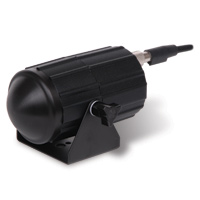Odometer
On ground vehicles, the use of an odometer input will greatly improve the Certus navigation and orientation solution
There are several different options for odometer that are explained as follows.
Factory VSS Signal
Most mass-market vehicles since 1980 contain a VSS (vehicle speed sensor) signal that can be wired directly into one of the Certus GPIO pins. Any voltage limits on this pin that must be taken into consideration.
To set up the odometer, the appropriate GPIO pin should be set to Odometer Input using INS Manager. The odometer pulse length must then be set either manually or automatically, see Odometer Pulse Length for more information.
For more information on the GPIO signals and their requirements see GPIO Pins and the Auxiliary Port.
OBDII Odometer Interface
For applications where it is undesirable to modify the vehicle or the system needs to be used with multiple vehicles, the OBDII odometer interface may be a better solution. OBDII is a vehicle diagnostic port standard and most vehicles from the mid 1990s onwards contain an OBDII port in the drivers side foot well. Advanced Navigation produces an inexpensive OBDII Odometer Interface that plugs into this OBDII port and feeds Certus with odometer data over the Auxiliary RS232 port. See the figure below. Contact the Advanced Navigation sales team at sales@advancednavigation.com for more information.

Advanced Navigation OBDII Odometer
Aftermarket Wheel Speed Sensor
Applications requiring very high performance without GNSS for any length of time are recommended to use a high precision aftermarket wheel speed sensor. Advanced Navigation recommends aftermarket wheel speed sensors from Kistler, Pegasem or GMH Engineering.

Aftermarket Wheel Speed Sensor
Radar Speed Sensor
For applications requiring high performance in harsh conditions where aftermarket wheel speed sensors are not feasible, a radar speed sensor is recommended. Advanced Navigation recommends radar speed sensors from Stalker or GMH Engineering.

Radar Speed Sensor